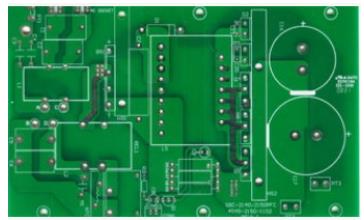The development of a circuit board is an example, where a team is usually required to prove the accuracy of the design. This is due to the fact that the process of demonstrating a successful PCB design consists of three stages: design, manufacturing and testing. For circuit boards of any complexity, development is a cyclical process, including PCB prototype iterations. To a large extent, the efficiency of this process depends on how you make the most of the flexibility of circuit board assembly. Before detailing the options available during the prototyping process, let us first define the low-volume PCB assembly.
Defines small batch PCB assembly
The manufacturing process of printed circuit boards consists of three parts. These are circuit board manufacturing, component procurement and PCB assembly. The optimization of these three manufacturing activities depends on the synchronization between the contract manufacturer (CM) and the equipment and processes used in the design. In fact, there is a direct proportional relationship between the quality of the PCB and the establishment of your PCB. CM's DFM rules and guidelines. For production, small batches or large batches, strict compliance with DFM and DFA is to achieve the highest yield and the lowest production cost.

Regardless of the level of development or production, unless otherwise specified by design changes, the manufacturing of the circuit board may remain the same. On the other hand, assembly may vary depending on whether you are prototyping (or perfecting the design) or producing a circuit board for delivery. In some cases, the production volume may be small. For example, in the manufacture of critical or special PCBA for the following purposes: aerospace, medical equipment, industrial, automotive or military PCBA. However, as described below, low-volume PCB assembly is an important part of all circuit board development.
Low-volume PCB assembly is to mount components on a relatively small number of bare boards, ranging from a few to 250 or less.
Assembly, although the steps are fundamentally clearly defined, it provides a lot of flexibility, as described in the next section. If used properly, it can really improve your circuit board development efficiency.
Use small PCBA to verify your design
For all circuit board development, good PCB design elements should be put forward. For assembly, in addition to wise component placement decisions, you should also be aware of the various options available to help speed up design verification, usually referred to as prototyping or design ⇒ build ⇒ test iteration process. These options can be classified as part of a sequential or parallel prototyping strategy.
Prototype options for small batch PCB assembly
l sequential
In design verification, the most common approach is to incorporate or test a sequential prototyping strategy with a small number of design changes in each cycle.
l parallel
Parallel prototypes can be used to reduce or minimize the number of production runs required. This is done by making multiple design changes to a small number of circuit boards, and then testing all the variants before the next manufacturing run. These variants are only suitable for assembly, and all bare boards are manufactured in a similar manner.
For these two strategies, the following assembly options can be performed:
l Do not place (DNP)
In order to test specific components or sub-circuits, it is best not to place other components that may make testing and troubleshooting more complicated and difficult.
l Use different variants
The extension of DNP is to place different sets of components on different boards to simplify testing.
l Use lead-containing solder instead of lead-free solder
In the process of making a prototype in a PCB factory, it usually requires 3 rework. It is much easier to use lead-containing solder than to use lead-free solder.
l Use reworkable surface treatment
Since rework may be required, it is best to use a surface finish that is easy to rework or not prototyped at all.